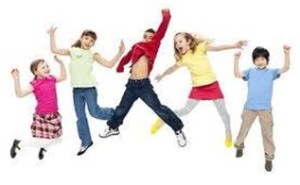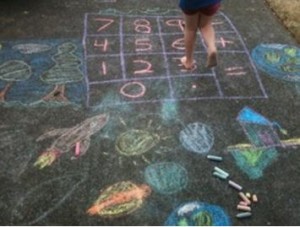Children have different learning modes or unique learning styles. They have different ways of learning depending on the way they absorb and assimilate information. Some kids recall information well by things that are seen or read (visual), for some auditory input is most valuable, others find it hard to acquire information unless they use them in real-life activities and are what we call Kinesthetic learners.
Studies show that most of the school population excels through kinesthetic learning . They prefer a “hands on” or “doing” approach to build understandings. They are most successful when they are engaged in hands on activity rather than sitting for hours in a classroom. These types of learners also like to participate in science experiments, drama, dance and educational trips. They learn more in small or large groups and enjoy educational games or educational materials such as flash cards or blocks.
Kinesthetic learning has the advantage of letting children gain self-knowledge by letting them learn at their own comfort level, confidence level and with their own creative potentials. With this style of learning, children are also engaged in positive social interaction, develop problem solving skills and can apply creativity through self-expression.
Because of these many advantages of Kinesthetic learning, Education is now shifting to the idea of interactive teaching techniques. Hands on teaching are becoming more popular because it addresses not only the needs of kinesthetic learners but also the needs of visual and auditory learners.
Therefore, Kinesthetic learning is beneficial for all students and can aid in overall cognitive development. Thus there are many invaluable benefits to kinesthetic learning activities:
Help students create a connection between language and its concepts. An example would be improvising creative movements/materials to show the different concepts such as “big and small”. A simple activity of mimicking an animal action or sound can also help them establish associations between words, sounds and meanings.
Increased Comprehension. A concept can be understood better with physical activities. An example will be an engaging activity such as spelling dance. Spelling challenges can be overcome by this activity where children can practice letter combination using bodily gestures and a hip music that will keep it more interesting to children. Dance can also be incorporated in teaching other language concepts such as synonyms and antonyms.
Multi-Cultural Education. Learning ethnic dances from different cultures can help your students/children appreciate the value of diverse cultures.
Support the Development of Cognitive Skills. Sequencing, following directions and other cognitive skills can be developed through the use of kinesthetic activities. Accompanying actions/music while having them read or listen to a story can help students understand and re-call the events in story and later on reproduce or reconstruct the sequence of events.
Develop Social Skills. When children get to mingle with other children in a group it will help them develop positive social interactions where they learn to communicate and cooperate. They also will learn the values of trust, discipline and persistence. Skills such as creative thinking, problem solving, observation can also be developed by engaging students in creative kinesthetic activities.
More From Our Blog
- How Shakespeare Informs our English Language
- The Question of Formal Learning for Pre Schoolers.
- Should Children Still Have Formal Handwriting Lessons? Here are the Pros and Cons.
- Why Mathematics is Important to Secondary Education.
- Reluctant Learners
- Empowering academic honesty
- F.A.I.L. = First Attempt In Learning
- Strength-Focused Tutoring
- Marvels in the Mundane
- Bringing Back Wonder
- What Does “Success” Really Mean?
- Number Sense: The Key to Math Success.
- 7 Reasons Why Literacy is the Most Important Learning Goal
- No Child Left Behind
- The Battle For Balance
- Exams: They’re about more than grades
- Inspiring growth through constructive critique
- Curiosity: Toddlers have got it right
- Science confirms multisensory learning enhances memory
- Is knowing your times tables overrated?
- Why Study Shakespeare?
- Reflective climbing for academic success
- Silver linings
- When you’re stressed and overwhelmed, make a list
- What to do about maths anxiety
- Senior School Transitions
- Down the Rabbit Hole
- Online Maths Games: The Results Add Up
- What is the real purpose of tutoring?
- Inspiring the Unmotivated Student


